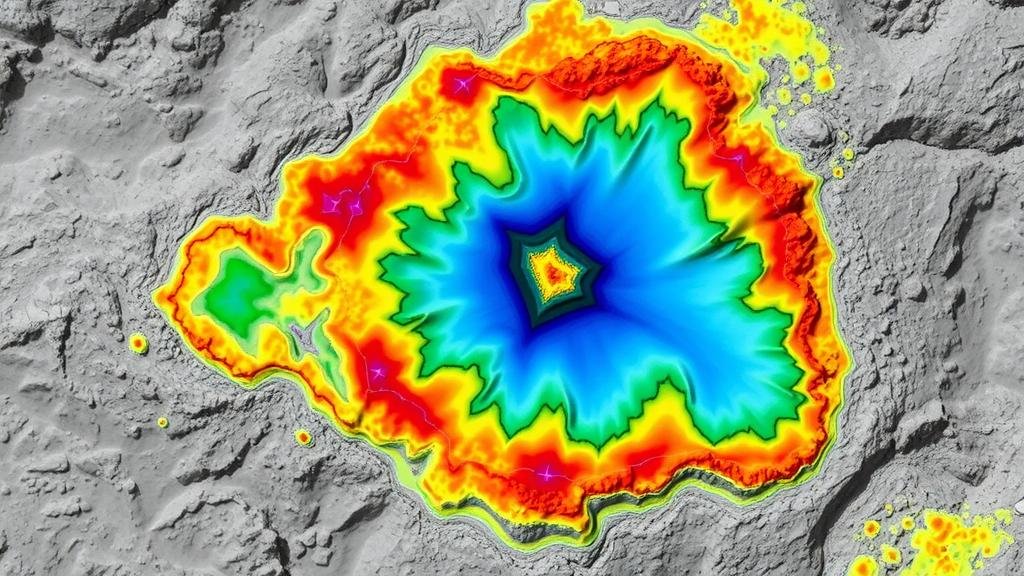Using Geological Heat Maps to Identify Hidden Gemstone Deposits
Using Geological Heat Maps to Identify Hidden Gemstone Deposits
The pursuit of finding valuable gemstones has a storied history that intertwines scientific inquiry with economic ambition. In recent years, the application of geological heat maps has surfaced as a critical tool in mineral exploration, particularly in the search for hidden gemstone deposits. This article will explore the methodologies used to generate heat maps, their application in gemstone prospecting, and tangible examples of successful identification of gemstone deposits using this technology.
Understanding Geological Heat Maps
Geological heat maps are visual representations that illustrate variations in temperature across a given geographic area. e maps are created through the analysis of geothermal data, which can indicate underlying mineral formations based on temperature anomalies.
The foundational principle behind geological heat mapping lies in the fact that different minerals respond differently to geothermal processes. For example, certain gemstones like sapphires and rubies can be found in regions exhibiting specific temperature ranges in the crust. By mapping these geothermal gradients, geologists can effectively pinpoint areas of interest for further exploration.
Methodologies for Heat Map Generation
Creating an effective geological heat map involves several steps:
- Data Collection: Temperature data is collected using geological surveys and remote sensing technology. e methods can include satellite imagery, airborne thermal sensors, and ground-based measurements.
- Data Analysis: The collected data undergoes statistical analysis to detect anomalies. This may involve GIS (Geographic Information System) software to integrate and visualize large datasets.
- Interpretation: Geologists interpret the heat distribution to infer the presence of mineral deposits. This is often based on established geological models and previous case studies.
Applications in Gemstone Exploration
The application of heat maps in gemstone exploration presents a modern approach to identifying potential deposits. This is particularly vital in regions where traditional prospecting methods may fall short due to extensive vegetation, remote locations, or challenging terrain.
One notable case is in Madagascar, where the discovery of sapphire deposits has been significantly enhanced through geothermal heat mapping. Researchers conducted a comprehensive study in 2012, revealing that areas with elevated thermal readings corresponded to known sapphire-rich zones. This allowed explorers to target their efforts effectively, minimizing costs and maximizing yield.
Case Studies
Several documented cases exemplify the successful use of geological heat maps in locating gemstone deposits:
- Yogo Sapphire Mine, Montana: A study conducted in the 1990s employed thermal mapping to discover additional deposits around the original Yogo mine. analysis highlighted temperature anomalies indicative of sapphire-bearing formations, leading to expanded mining operations.
- Himalayan Blue Sapphire Deposits: In the Himalayas, thermographic surveys have identified anomalous thermal features that align with sapphire deposits. Research conducted by the Geological Survey of India in 2010 showcased successful correlation between heat maps and gemstone availability.
Challenges and Limitations
While the benefits of using geological heat maps are evident, there are challenges associated with their usage. Notably:
- Data Accuracy: The reliability of heat maps is contingent upon the quality and resolution of data collected. Inaccurate or sparse data can lead to misinterpretation.
- Geological Complexity: Complex geological formations may mask temperature anomalies, leading to false negatives in gemstone identification.
Conclusion and Future Directions
Geological heat maps represent a significant advancement in the contemporary exploration of gemstone deposits. As technology continues to improve, including enhanced data collection methods and more sophisticated analytical tools, we can expect further advancements in this field.
For gemstone exploration, heat maps provide a critical edge, allowing prospectors to optimize searches efficiently and effectively. Future research should focus on integrating heat mapping with other geological exploration tools, such as geochemical analysis and 3D modeling, to further enhance the accuracy of gemstone deposit identification.
To wrap up, the strategic use of geological heat maps not only minimizes exploration costs but also maximizes the potential for discovering hidden gemstone treasures beneath the earths surface.



